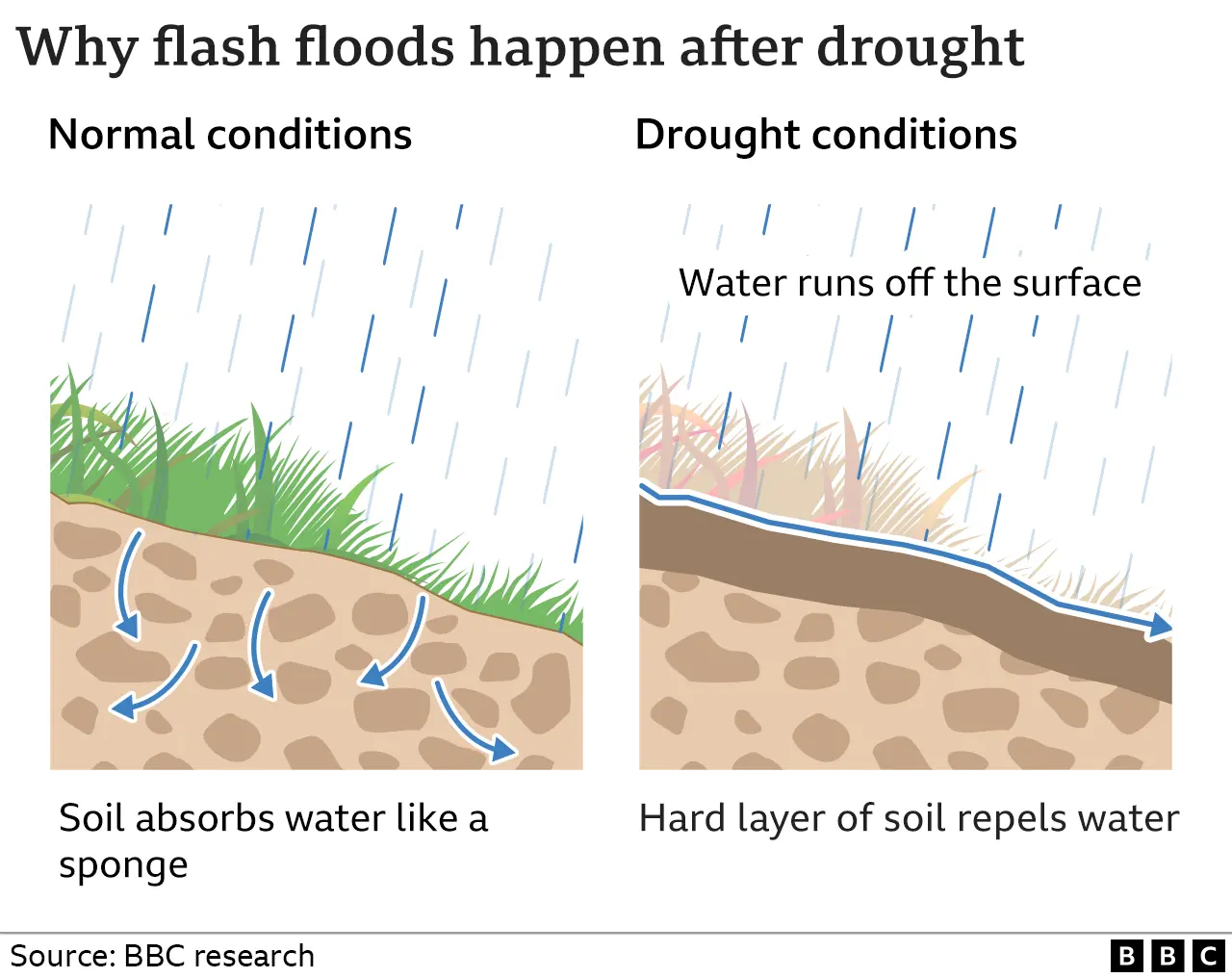Thunderstorms: Why drought can lead to dangerous flooding
 Getty Images
Getty ImagesAfter weeks of hot and dry conditions in most of the UK, with drought declared in parts of England, it might seem that a good downpour is what we need.
But the heavy rainfall and thunderstorms forecast by the Met Office this week could instead be a hazard.
Scientists are warning that they could lead to flash flooding and are unlikely to replenish dry soils.
Here is why torrential rain may not be what our parched land needs right now.
Flash flooding
On top of two heatwaves and record-breaking temperatures this summer, many parts of the UK have seen far-below average rainfall.
This has effectively baked the soils, leaving them dry and hard with very low moisture levels, the UK Centre for Hydrology and Ecology says.
If rain falls in large amounts and at high speed, as happen in thunderstorms, the soil cannot absorb the moisture. Instead it pools on the surface. On sloped surfaces, that water rapidly runs off, causing flash flooding.

The effect is like pouring water at high speed on to concrete, Dr Rob Thompson, a meteorologist at the University of Reading, told BBC News.
"Grounds of our gardens, parks and farmlands are now all potentially as dry as tarmac and concrete gets. Areas that aren't tarmac will behave like tarmac when rain hits them," he says.
The major effect drought has on soil is something called hydrophobicity, explains soil scientist Prof John Quinton, at the University of Lancaster.
When water hits a waterproof jacket, it is repelled - making it form droplets on top and eventually run off.
A similar thing happens when organic matter in the soil dries out, forming a layer of material that keeps out water.
"Instead of water moving into the soil, it stays on the surface instead," Prof Quinton says.
'Soil structure'
It is also hard not to notice how the drought has killed off grasses and other vegetation, turning parks and fields yellow.
These usually form a cover over soil, protecting it from heavy rainfall.
"Vegetation breaks up big thunderstorm raindrops into smaller drops. Without that protection, the big drops damage the soil structure, meaning even less water can infiltrate," explains Prof Quinton.
While the UK has lots of different types of soil, if it rains hard enough, the whole country is susceptible to flash flooding, explains Dr Thompson.
Anywhere with steep-sided, hilly terrain, where water can move very quickly, is at particularly high risk.
While it is unlikely to be as bad as the devastating flooding in Germany and Belgium last summer, suggests Dr Thompson, the potential is always there.
Thunderstorms can deliver large amounts of rain but usually in a small area and a short spell. That does not give the soil enough time to recover.
Scientists say that light rain over a number of hours and days will get soils back to more normal levels.
But weeks of above-average rainfall is probably needed to bring an end to the drought.
Scientists have said that the record-breaking temperatures seen in July would have been "virtually impossible" without human-caused climate change, and that heatwaves and droughts are likely to become more extreme and commonplace.
